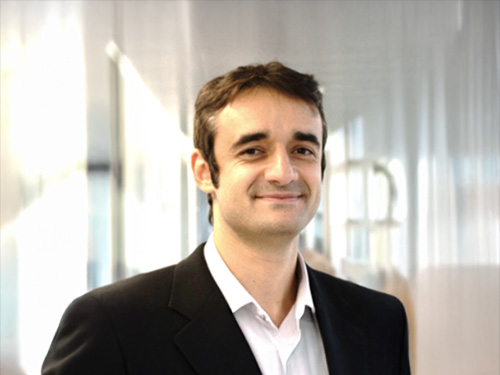Vadim Krivitsky, Ph.D. – Acytronix

Please tell us about yourself and your company.
My co-founder and I founded Acytronix out of a shared frustration with the challenges of isolating extracellular vesicles (EVs) from biological fluids. The process was slow, tedious, and inefficient, and we knew there had to be a better way. Based on our postdoctoral research at Prof. Leroux's Drug Formulation and Delivery Laboratory at ETH Zurich, we combined our expertise in miniaturized systems and bioengineering to develop a device that could simplify and speed up EV purification, reducing the process to just a few minutes. When researchers in the EV field started showing excitement about our solution, we realized its commercial potential. Securing a Bridge Proof-of-Concept fellowship gave us the momentum to take our idea further—building a working prototype and laying the foundation for what would become Acytronix.
Our flagship product is a portable, versatile device that purifies EVs directly from raw biosamples in under 10 minutes, without requiring bulky or expensive equipment. This solution integrates seamlessly into diverse workflows, ensuring efficiency and convenience. In addition to our device, we offer custom purification services and supply high-quality EVs sourced from various biological materials. Our customers include biopharmaceutical companies, university research labs, hospitals, veterinary clinics, and scientists specializing in biological nanoparticle research.
How we benefit from light scattering and Wyatt Instruments
EVs are a heterogeneous population of nanoparticles. After separating a specific subpopulation of EVs using our portable microstructured electrochemical device (PMED), we need to characterize them and assess their particle concentration and purity, which may vary depending on physiological states. Notably, certain diseases have been associated with increased secretion of specific EV subpopulations.
The DynaPro ZetaStar helps us validate the size range of the separated EVs and assess sample purity by detecting larger aggregates within the solution, ensuring the integrity of our EV preparations. Additionally, the system provides rapid analysis, delivering results in under a minute—critical for high-throughput workflows.
A unique feature of our PMED system is its ability to both separate and load EVs with siRNA. This process involves introducing a complex of cationic polymer with siRNA (a polyplex) to the EVs while they are attached to the PMED. These cationic complexes interact with the negatively charged EV membranes. After loading, excess cationic reagent is removed through washing steps, ensuring the preparation’s purity before releasing the loaded EVs. The DynaPro ZetaStar is particularly advantageous for analyzing such preparations due to its exceptional sensitivity across a wide size range, from single nanometers to micrometer-sized particles. This capability is crucial for accurately characterizing the polyplex solution, assessing the integrity of formulations, and detecting aggregates.
Additionally, we use zeta potential analysis to evaluate the charge of various components, including positively charged polyplexes, negatively charged EVs, and purified, loaded EVs after washing steps. The DynaPro ZetaStar’s small sample volume requirement ensures that we have enough material left for other assays, such as proteomics. This combination of rapid, precise analysis and broad particle detection capabilities makes it an invaluable tool for EV characterization.

The DynaPro ZetaStar helps us assess sample purity by detecting larger aggregates within the solution, ensuring the integrity of our EV preparations.
